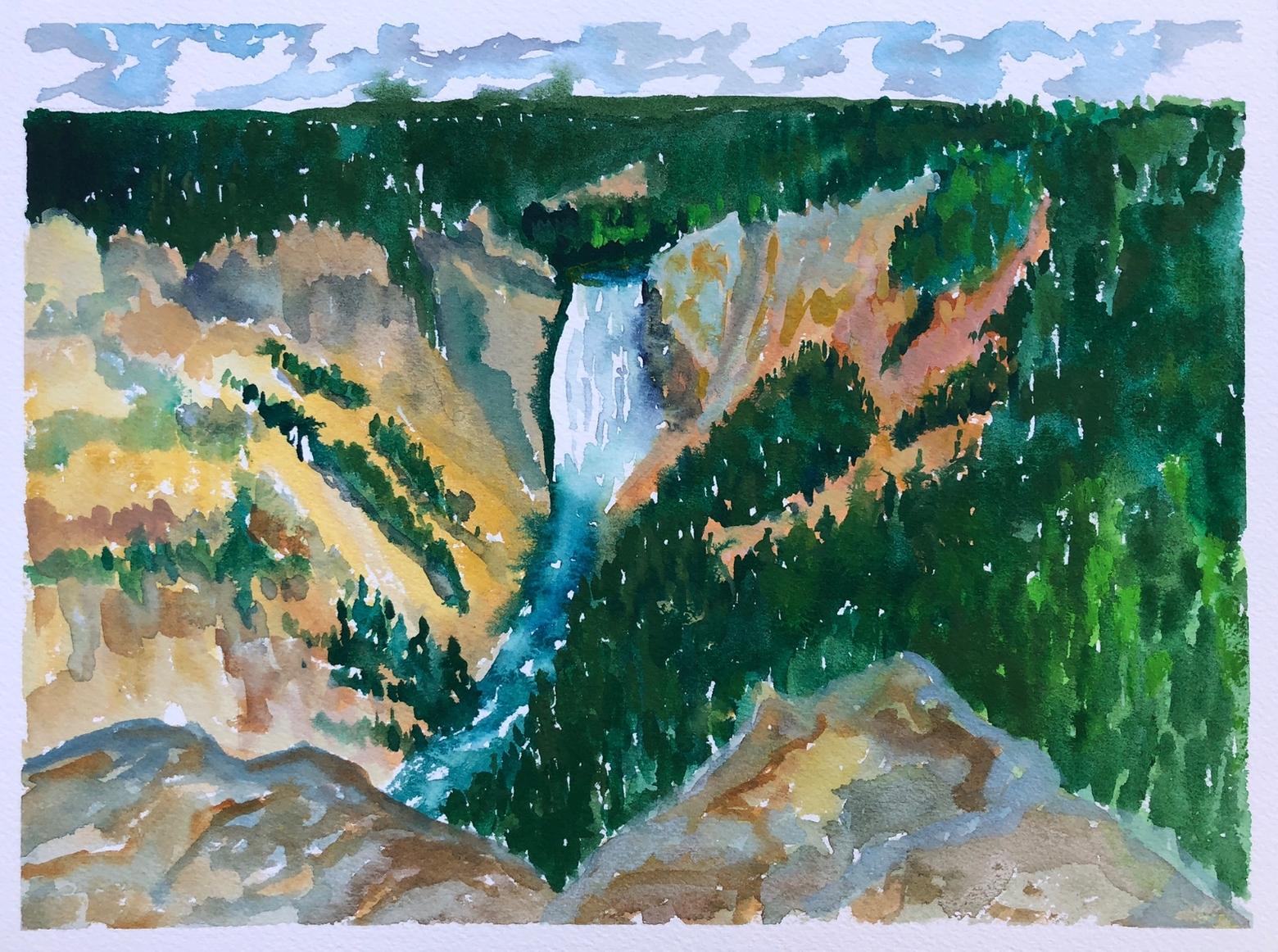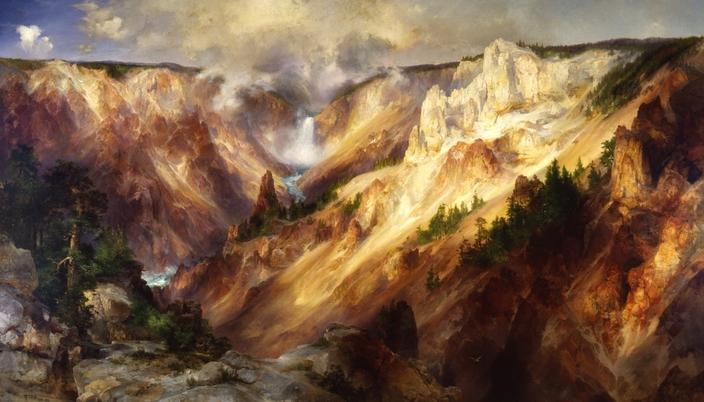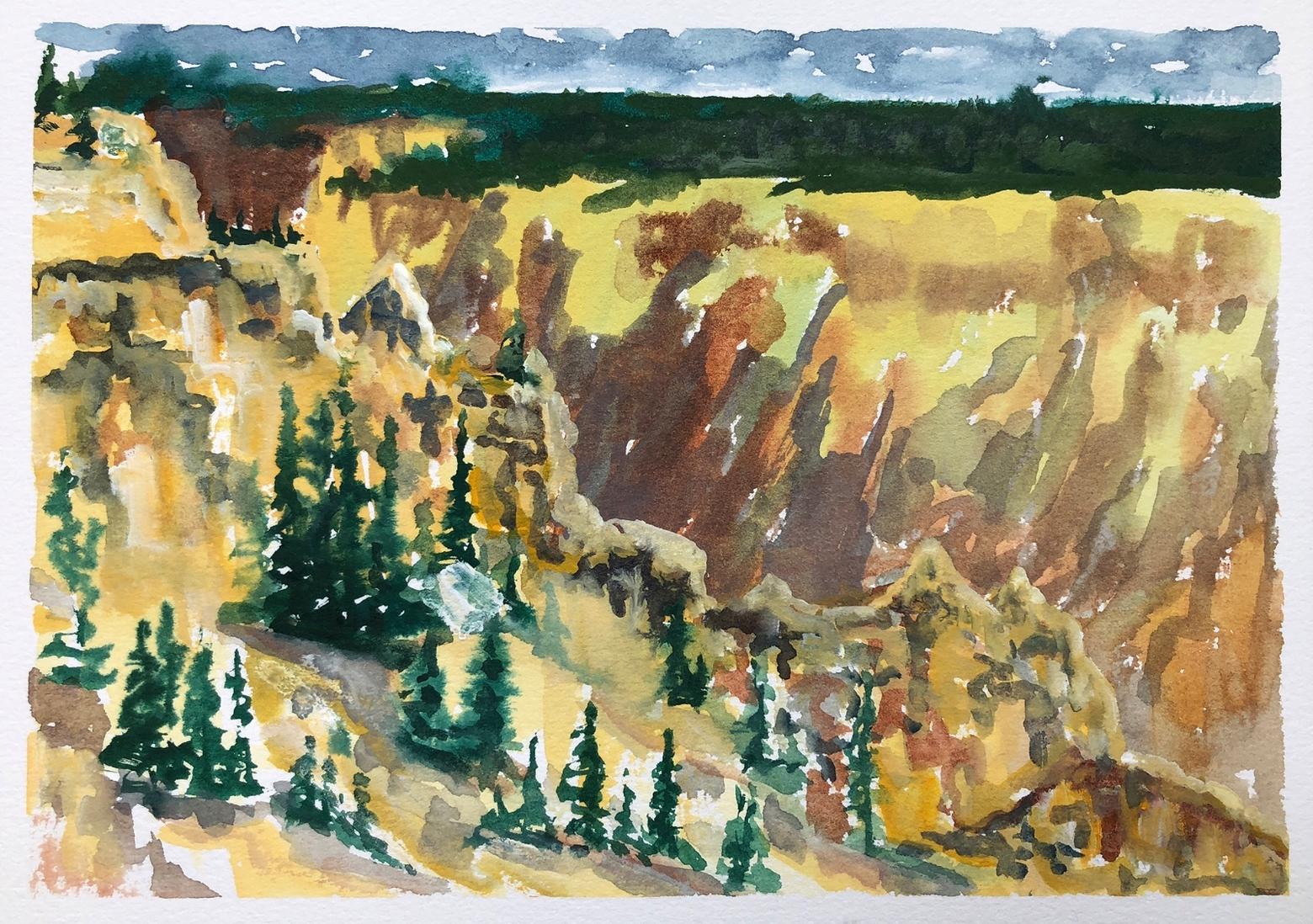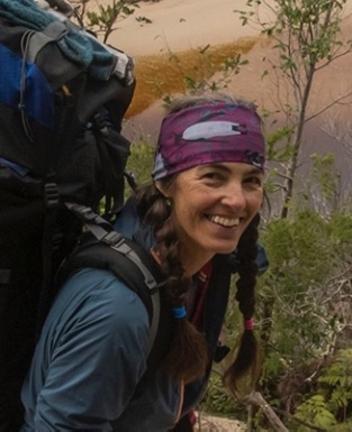Back to StoriesStanding In Reverence Of Yellowstone's Grand Canyon—And Thomas Moran
October 26, 2017
Standing In Reverence Of Yellowstone's Grand Canyon—And Thomas MoranMountain Journal Columnist Sue Cedarholm Takes 'Watercolor Diary' To The Visual Birthplace of Yellowstone
In his first
outing, Thomas Moran painted the view from the North Rim of the Grand Canyon of the Yellowstone. Many mistakenly believe the perspective came from Artist Point. With his work, Moran set the standard against which all
paintings of that scene afterward would be measured.
In my humble opinion, his
portrayals will never be surpassed.
I am not interested in translating details or reinterpreting his interpretation. Painting to me reflects various kinds of
moods I feel. Color is the tool I use
for understanding other things that are going on around me and in my personal
life.
Hence, this little simple quick-brush watercolor and the
companion piece, a portrayal of the Grand Canyon of the Yellowstone, below.
There are few vistas more iconic than the Lower Falls of the
Yellowstone River in Yellowstone National Park. Recently I took an October drive
through Yellowstone. I had been avoiding a park visit all summer due to the
over-abundance of visitors loving it to death. It’s a pity how many locals live close to
Yellowstone because we so enjoy being there yet something in our psyche tells
us to stay away during those weeks we most savor.
As I walked down the path toward the scenic overlook for the
Lower Falls I reflected on what it must have been like to be Moran and William
Henry Jackson, arriving on this unbelievable yet magical landscape in 1871 when
it was raw. The only trail leading to
the view would have been one created by deer or elk.
The paintings and photographs from the expedition were
instrumental in the creation of our first national park in 1872. As a painter and
photographer myself, I appreciate both of their perspectives.
I usually try and stay away from these most notable
panoramas. It is a daunting task to paint something so well known. If you don’t
get it right people know. Artistic license does not work as an excuse.
When I got to the overlook and let my thoughts stretch into
the chasm of space that defines the Grand Canyon of the Yellowstone, the
massive falls in the far distance, there was plum of mist rising above the
crashing water.
I knew I would attempt to capture this scene with the
illusion of pigments on paper. I did not
have time that day to paint plein air. I made some photographs that I used for
reference later in my studio.
Before I started painting I browsed Moran’s historic works. I was in awe, as I am with every viewing. Even
though they are embellishments, they meet us fresh.
Hoping to tap into my
inner Moran and more than slightly intimidated almost to the point of
paralysis, I put the brush to paper and used my mind’s eye to summon the day
when I stood gazing at the falls, letting the soundscape help to set the
palette.
What was I feeling?
The wind, the cold air, the sounds; with watercolor you only get one chance.
That is the main reason I love the medium, forced
spontaneity. You set the paint down; you do it as an expression or, in my case,
a response, maybe even a cathartic one. You don’t succeed or fail. You just
gain a little more clarity. We can all
stand to become more “aware”. Awareness
is the opposite of being numb.
Although there are occasions when I paint a landscape
numerous times before I reach a point where I can live with the result and not
toss it, I learn from each attempt. Paint,
photograph or write. Have a
conversation. Let nature talk to you.





